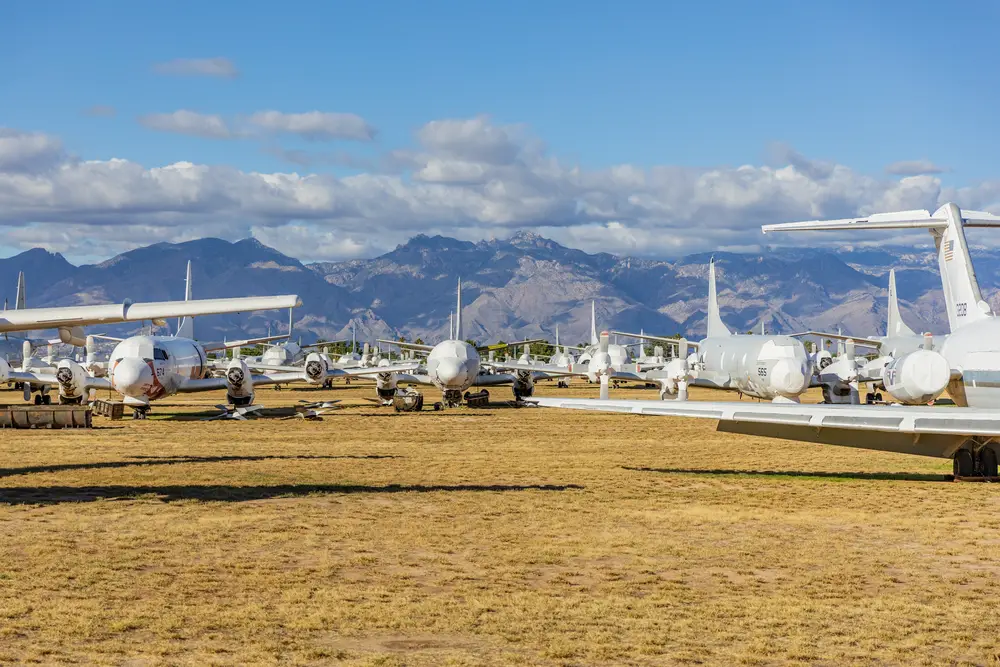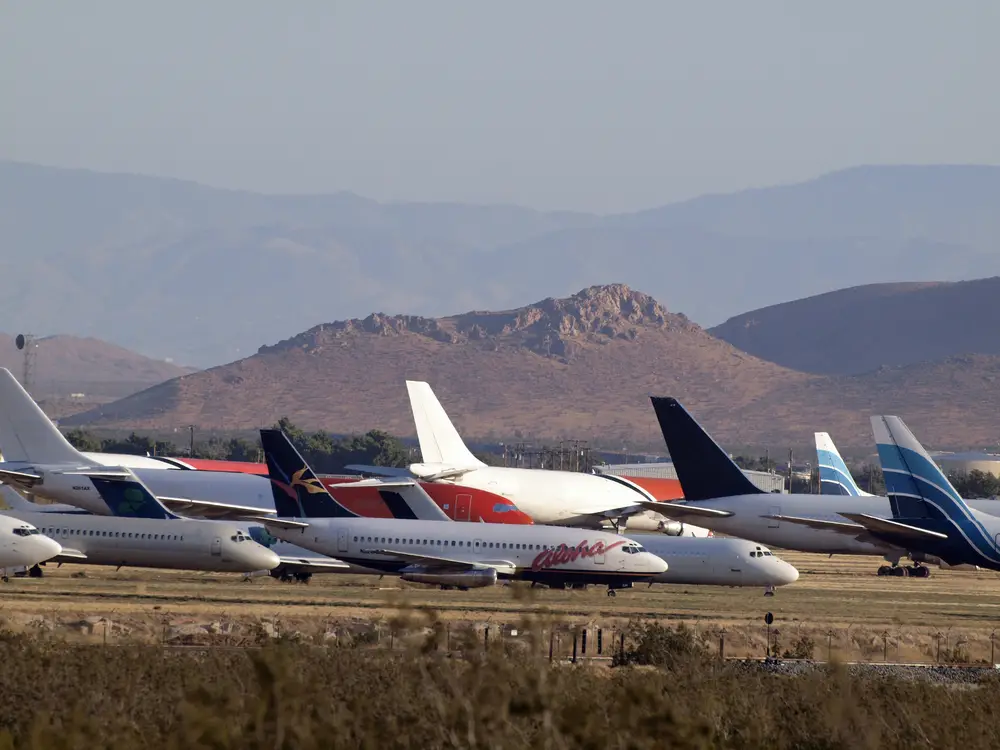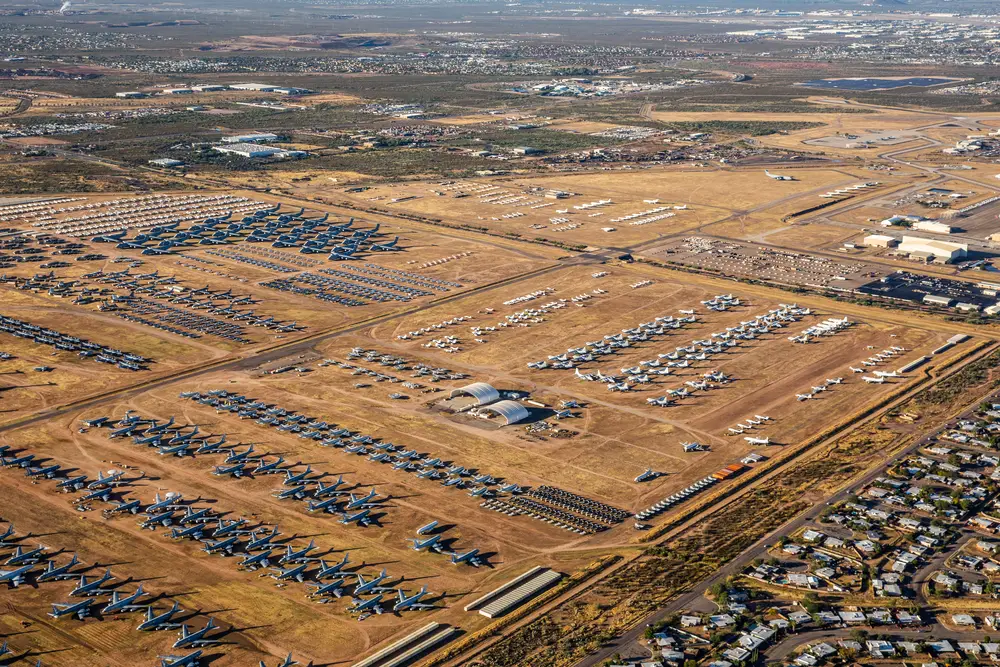
When airplanes reach the end of their lives, they have to go somewhere. Nowhere is this better on display than Davis-Monthan Air Force Base in Tucson, Arizona. This is a place where airplanes pass into the dustbin of history or sometimes live again. The place is called the boneyard, and this particular boneyard in Arizona is home to the largest preservation and storage area for airplanes in the world.
The 309th Aerospace Maintenance and Regeneration Group (AMARG) at Davis-Monthan Air Force Base handles more than 3,150 aircraft from all branches of the US military, NASA, and other government agencies. The group has many duties and storage procedures in place to handle the growing number of aircraft. Aircraft can be kept as they are and stored, making them available for use in the future, or the aircraft can be picked for parts, supplying the same type of aircraft still flying. Some aircraft are scraped and sold, while others are held for short respite periods before returning to service.
Davis Monthan was picked for the storage of aircraft because the area has low humidity, little rainfall, and is at an elevation of 2,550 feet. These conditions are ideal for the storage of aircraft and reduce the chance of corrosion. AMARG wash and then seal all aircraft upon arrival to the facility to guard against dust and sunlight. The engine fuel system is drained, refilled with oil, and then drained again to give it a protective coating inside the components. Any classified aircraft components are removed along with guns and ejection seat charges before being towed to its storage spot.
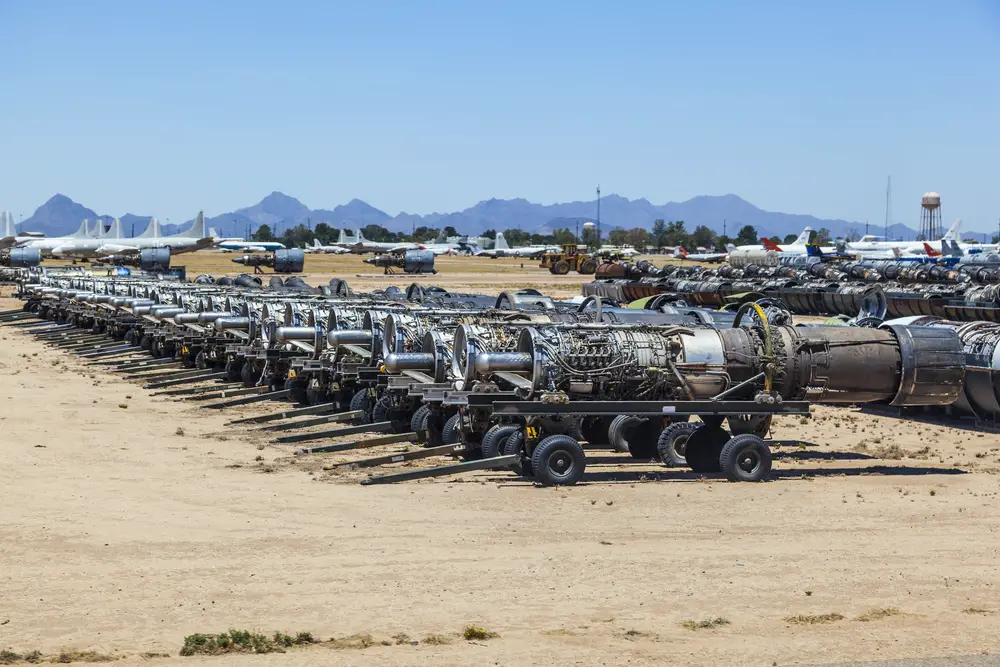
The facility has processed everything from Intercontinental Ballistic Missiles (ICBM) to B-52 bombers and any other aircraft used by the US military. The facility was tasked to dismantle 365 of the bombers in the 1990s, all at one time. It was a monumental task, given the size of an individual bomber.
Though the storage area at Davis-Monthan Air Force Base is by far the largest, there are many other storage areas around the US for such aircraft. There are multiple sites that handle military and commercial aircraft, though not on the scope of the boneyard at Davis Monthan Air Force Base, and they too are located in dry locations in the southwest. Some of the larger facilities are Mojave Air and Spaceport, Southern California Logistics Airport, Pinal Airport in Marana, Arizona, Litchfield Park/Phoenix Goodyear Airport, and Roswell International Air Center in New Mexico.
If you’re ever flying over the area, you can clearly see these retired airplanes from the sky, and it’s an impressive sight. But many of them will never get to fly again. I know, it’s sad.
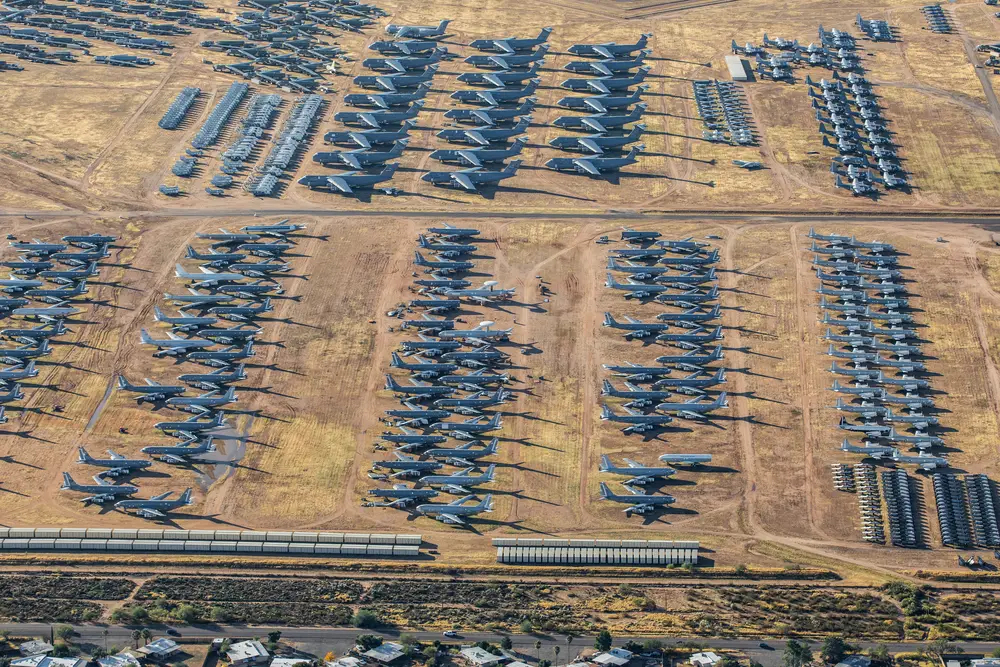
Sources: Airplane Boneyards, Desert USA, Davis-Monthan Air Force Base

